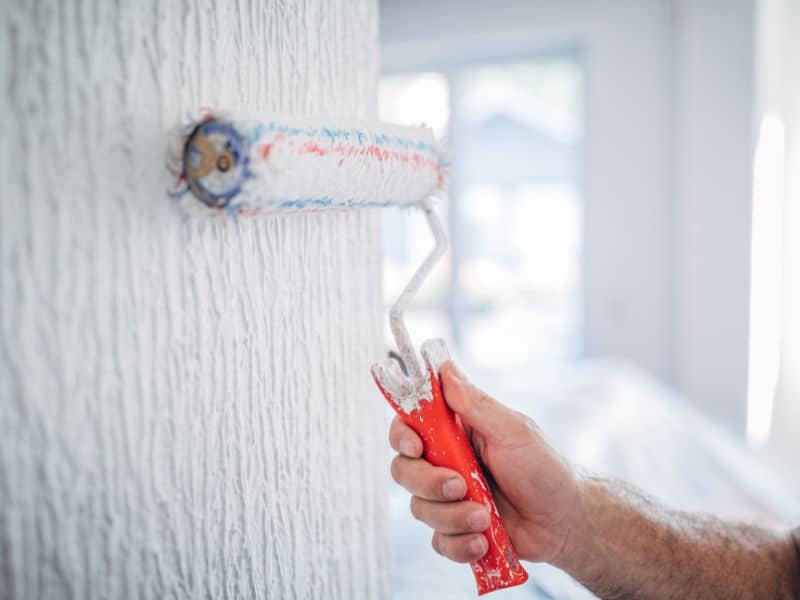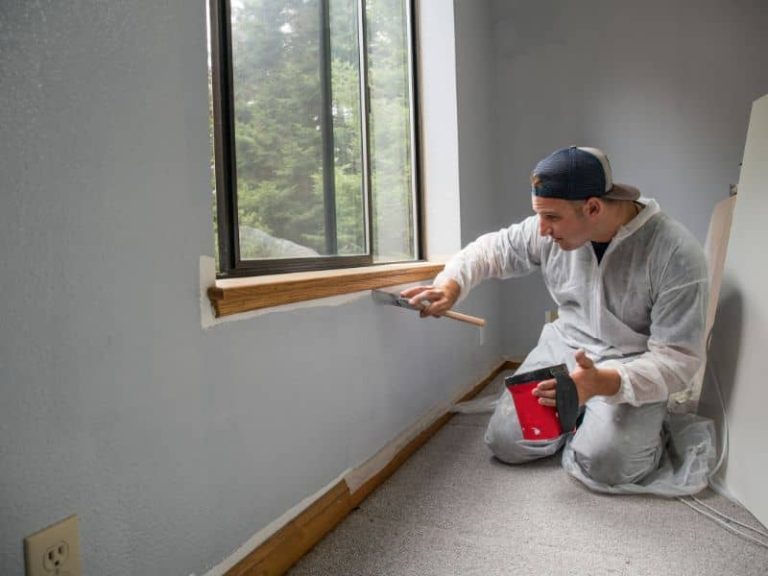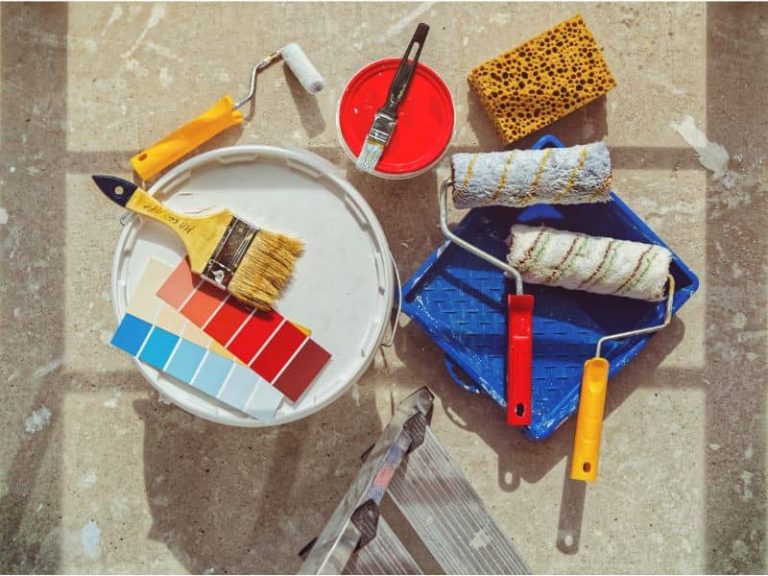How Often You Should Paint Your House: The Ultimate Guide
The Importance of Maintaining the Appearance of Your House

Your house is not just a place to live in; it’s a reflection of your personality, style, and taste. The exterior of your home is what people see first, and it leaves an impression on them about how you take care of your property.
A well-maintained home with a fresh coat of paint can make all the difference in creating a welcoming atmosphere for guests and passersby. Not only does maintaining the appearance of your home attract positive attention, but it also protects your investment.
Regular maintenance on your house will help prevent damage from harsh weather conditions like rain, wind, snow, and heat. Painting serves as an added layer to protect against moisture that can lead to rotting wood or mold growth.
Brief Overview of How Often You Should Paint Your House
The frequency at which you should paint your house depends on several factors such as climate, the type and quality of paint used previously on the house, and how well it has been maintained since then. On average, experts suggest painting the exterior every 5-7 years and interior walls every 3-4 years. However, these are just general guidelines.
It’s important to remember that this timeline varies depending on each specific situation. For example, houses in harsh climates with extreme temperatures or high humidity may need more frequent painting than those in milder climates.
Additionally, higher quality paints tend to last longer than lower quality ones. In order to determine how often you should repaint your home accurately, you’ll need to evaluate each specific factor individually and make an informed decision based on what’s best for your particular property.
Factors to Consider When Deciding How Often to Paint Your House
Climate and weather conditions in your area
One of the most important factors to consider when deciding how often to paint your house is the climate and weather conditions in your area. Extreme weather conditions like heavy rainfall, snow, and high humidity can have a significant impact on the lifespan of your paint job. In general, areas with harsher climates will require more frequent painting compared to areas with milder climates.
For example, if you live in an area with a lot of rain or snowfall, then your house is likely subjected to moisture damage which can cause paint peeling or cracking. Similarly, if you live in an area that experiences frequent hurricanes or strong winds, then the exterior of your house may need more frequent repainting due to wind damage.
Type of paint used on your house
Another factor that affects how often you should repaint your home is the type of paint used on it. The quality and longevity of different types of paints vary greatly depending on their composition. Latex-based paints are known for being durable and resistant to fading caused by sunlight exposure.

Oil-based paints are also known for their durability but can be prone to chipping and cracking over time due to changes in temperature and humidity levels. To ensure that you use the right type of paint for your home, it’s best to consult with a professional painter who can advise you on the best option based on factors such as climate and weather conditions in your area.
Quality of previous paint job and maintenance
The quality of previous painting work done on your home will also impact how often you should repaint it. Generally speaking, a high-quality paint job should last around 5-7 years before needing another coat.
However, if the previous work was not done properly or without proper maintenance, then the paint job may not last as long. Poorly applied paint jobs or lack of upkeep like cleaning and repairing damaged areas can lead to peeling, chipping, and cracking of the paint, which in turn can impact the overall lifespan of your home’s paint job.
In addition to hiring a professional painter to ensure that your house is painted with high-quality products, it’s equally important to maintain your home regularly by cleaning it, repairing any damages and repainting areas that need attention. By doing so, you can extend the life of your home’s painting work and keep it looking fresh for years to come.
Signs That Indicate It’s Time to Repaint Your House
Fading or Peeling Paint: A Sure Sign of Aging Paint

One of the most common signs that it’s time to repaint your house is fading paint. As paint ages, it loses its color and vibrancy, making your home look dull and lifeless.
Fading can occur due to a number of factors, such as exposure to sunlight or harsh weather conditions like wind and rain. Peeling paint is another telltale sign that your house needs a fresh coat of paint.
When paint begins to peel, it means that it’s no longer properly adhering to the surface underneath. This could be due to poor preparation before painting or using low-quality paint.
If you notice any fading or peeling on your home’s exterior, it’s time for a new coat of paint. Not only will this improve the appearance of your home, but it will also protect the underlying surface from further damage.
Cracks or Chips in the Paint Surface: More Than Just Cosmetics
Cracks or chips in the paint are more than just cosmetic issues; they can also allow moisture to penetrate into the underlying structure. Once moisture gets in, it can cause rotting wood or other types of structural damage that can be costly to repair. Cracks and chips in the paint often occur due to temperature fluctuations that cause expansion and contraction in building materials over time.
This stress eventually leads to small cracks in the surface of painted areas. If you notice any cracks or chips in your home’s exterior, it’s important not only for aesthetic reasons but also for preventing more severe structural problems down the line.
Mold or Mildew Growth on Exterior Walls: A Health Hazard
Mold and mildew growth on exterior walls is not only unsightly but also poses a health hazard to you and your family. Mold spores can cause respiratory problems, especially in people with preexisting conditions such as asthma or allergies.
Mold and mildew thrive in moist environments, which is why painted surfaces are particularly susceptible. If you notice any discoloration or spots on your home’s exterior that look like mold or mildew, it’s time to call a professional painter to address the issue.
Overall, if you notice any of these signs on your home’s exterior, it’s time for a new coat of paint. Not only will this improve the appearance of your home, but it will also protect its underlying structure from further damage and potential health hazards.
Benefits of Regularly Painting Your House
Protection Against Weather Damage
Your home’s exterior is constantly exposed to the elements, which can cause damage over time. Regularly painting your house can help protect it from weather-related damage such as moisture, mold growth, and rotting wood. Paint acts as a barrier against water, protecting the underlying materials from moisture damage.
Additionally, paint can also protect against UV rays and extreme temperatures that can cause cracking and fading. By regularly maintaining your paint job, you are helping to preserve the structural integrity of your home.
Increased Curb Appeal
A fresh coat of paint on your home’s exterior can significantly improve its curb appeal. A visually appealing exterior creates a welcoming atmosphere for guests and potential buyers alike.

In addition to refreshing the appearance of your house, a new coat of paint can also provide an opportunity to update the color scheme or change the style altogether to match current trends or personal preferences. A well-maintained exterior not only adds value to your property but also enhances the overall character of your neighborhood.
Improved Resale Value
Maintaining an attractive exterior goes beyond enhancing curb appeal–it also impacts resale value. A fresh coat of paint increases perceived value by creating an impression of “newness” without requiring significant structural changes or renovations.
Many real estate agents recommend repainting before putting a home on the market because it gives potential buyers one less thing to worry about when considering purchasing a property. Investing in regular maintenance like painting may seem costly initially but it will pay off in increased resale value and quicker sale times when it comes time to sell your house.
How Often Should You Paint Different Parts of Your House?
Exterior
Your home’s exterior is the first thing people see when they approach your house, so it’s important to keep it looking its best. The frequency of painting the exterior of your home depends on various factors such as climate or weather conditions in your area, the quality of the paint used, and the previous paint job and maintenance.
Generally, experts recommend repainting your home’s exterior every 5-10 years. If you live in an area with harsh weather conditions such as strong winds or heavy rains, you may need to repaint more frequently.
If you notice any signs of wear or damage like fading or peeling paint, it may be time for a fresh coat. When repainting your home’s exterior be sure to pay extra attention to areas like siding and trim.
These areas are most susceptible to damage and require additional maintenance. Be sure to use high-quality paint that is designed for outdoor use.
Interior
The interiors of most houses are painted with a variety of surfaces such as walls, ceilings, trims & baseboards. Each surface type requires different care and attention when deciding how often one should repaint them.

Walls
The frequency at which one should repaint their walls depends largely on how much traffic each room gets. High traffic areas like living rooms or hallways typically require more frequent repainting than low traffic areas such as bedrooms. A good rule of thumb is to consider repainting any room that has not been painted in over 5 years or shows signs of wear and tear like scratches or scuffs on walls.
Ceilings
Ceilings generally don’t require painting as often as other surfaces since they are not exposed to wear and tear. However, if your ceiling has stains or other visible damage, it may be time for a fresh coat of paint.
Trim and Baseboards
Trim and baseboards are often overlooked when it comes to painting, but they can greatly enhance the overall look of a room when painted. These areas typically require repainting less frequently than walls or ceilings, but you should repaint them if they become discolored or show signs of damage.
Overall, how often you should paint your house depends on various factors such as climate conditions in your area and the quality of previous paint jobs. By keeping an eye out for signs of wear and damage, you can help ensure that your home always looks its best.
Tips for Maintaining Your Paint Job Between Repaints
Exterior Maintenance
Regular exterior maintenance can help prolong the life of your paint job. One important task is to clean your gutters and downspouts regularly. Clogged gutters can cause water to overflow and damage your siding or trim, which can lead to peeling paint.
You should also make sure that trees and bushes are trimmed away from the house, especially those that might rub against the paint surface during windy days. This can help prevent scratches or abrasions on the paint surface.
Interior Maintenance
Just like with exterior maintenance, there are plenty of things you can do inside your house to keep your paint looking great for longer periods of time. One key point is to avoid harsh cleaning products when cleaning walls or baseboards.
Harsh chemicals in some cleaners may damage the finish or color of your painted surfaces. Instead, use a mild solution of warm water and dish soap to clean painted walls or baseboards.
Another thing you should do is maintain a consistent indoor climate in terms of temperature and humidity. Fluctuations in temperature and humidity levels may cause expansion or contraction in wood frames which could cause issues with cracking or peeling over time.

Maintaining a well-painted house requires responsibility, but it doesn’t have to be difficult! Keeping the exterior clean by maintaining gutters, trimming trees and bushes away from the home is essential for avoiding costly repairs such as dealing with moisture problems that may lead to mold growth on siding materials beneath the paint surface. Inside, avoid using harsh cleaners on painted surfaces such as walls or baseboards; instead use mild solutions made from dish soap mixed with warm water for gentle cleaning that won’t harm delicate finishes over time.Protecting both interior and exterior surfaces this way will help you avoid having to repaint your house as often and keep it looking great for longer.



